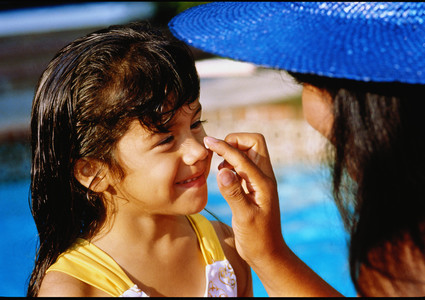





Family Health
5 Tips for Summer Pool Safety
Published: June 21, 2022

Here are the top five tips I share with parents at our Methodist Physicians Clinic pediatrics office to help your child stay safe this summer:
Never turn your back. I think the single best piece of advice for caregivers, is when a child swims, there should always be an adult providing direct supervision. This adult should know how to swim. Drownings can happen incredibly fast, and turning your back even for a second can be long enough for something tragic to happen. Although they are vital to water safety, don’t rely on lifeguards to be in charge of watching your child. On a busy pool day, they can have their hands full!

- Take those lessons! According to the Centers for Disease Control and Prevention (CDC), drowning is a leading cause of injury and death for children. Three children die from drowning here in the U.S. every day. Having your child take formal swimming lessons has been shown to reduce the risk of drowning, especially in kids ages 1-4. Adults should also consider taking a CPR class. In an emergency situation, CPR has been proven to improve outcomes in drowning occurrences. Your skills could save a life!
- Know your surroundings. Younger children are at a higher risk of injury in a swimming pool. If you have a home swimming pool, you need to install a protective barrier around the pool, such as a fence. Also, remove toys and floaties from the pool when it’s not in use so as not to tempt your little one into jumping in and playing. Older children are more likely to be injured in natural water, like lakes and oceans. Remind older children that swimming in open water is not the same as swimming in a pool. Extra precautions need to be taken to account for possible water currents or unsteady terrain. For even the most practiced swimmer, life jackets are recommended when in natural bodies of water.
- Don’t get burned. Protecting your child from the sun is also part of water safety. Even just a handful of bad sunburns can put your child at increased risk of skin cancer. Try to avoid the sun during the midday hours where the UV rays are the strongest. Try to cover your child’s body in clothing when possible, and give them a hat and sunglasses. And don’t forget to apply a sunscreen with at least SPF 15 about 30 minutes before going into the sun. If they will be swimming or getting wet, reapply often.
- Beware of germs. While chlorine can kill most germs in the water within minutes, there are some germs that are resistant to chemicals. In the past couple of years, the CDC has reported outbreaks of cryptosporidium, a parasite found in pools, hot tubs and water playgrounds. Norovirus (the dreaded "stomach bug") can also be found in pool water. If you swallow water that’s been contaminated by diarrhea from a sick person, you can be infected. If you are swimming, try not to swallow any water. To help prevent the spread of illness, make sure to shower with soap every time before entering a pool. Additionally, if you are sick with a diarrheal illness, make sure to avoid swimming until free of symptoms for two weeks.
Staying safe and cool this summer can be easy if you understand and follow a few basic steps. If you have questions about water safety, talk with your Methodist Physicians Clinic health care provider.


